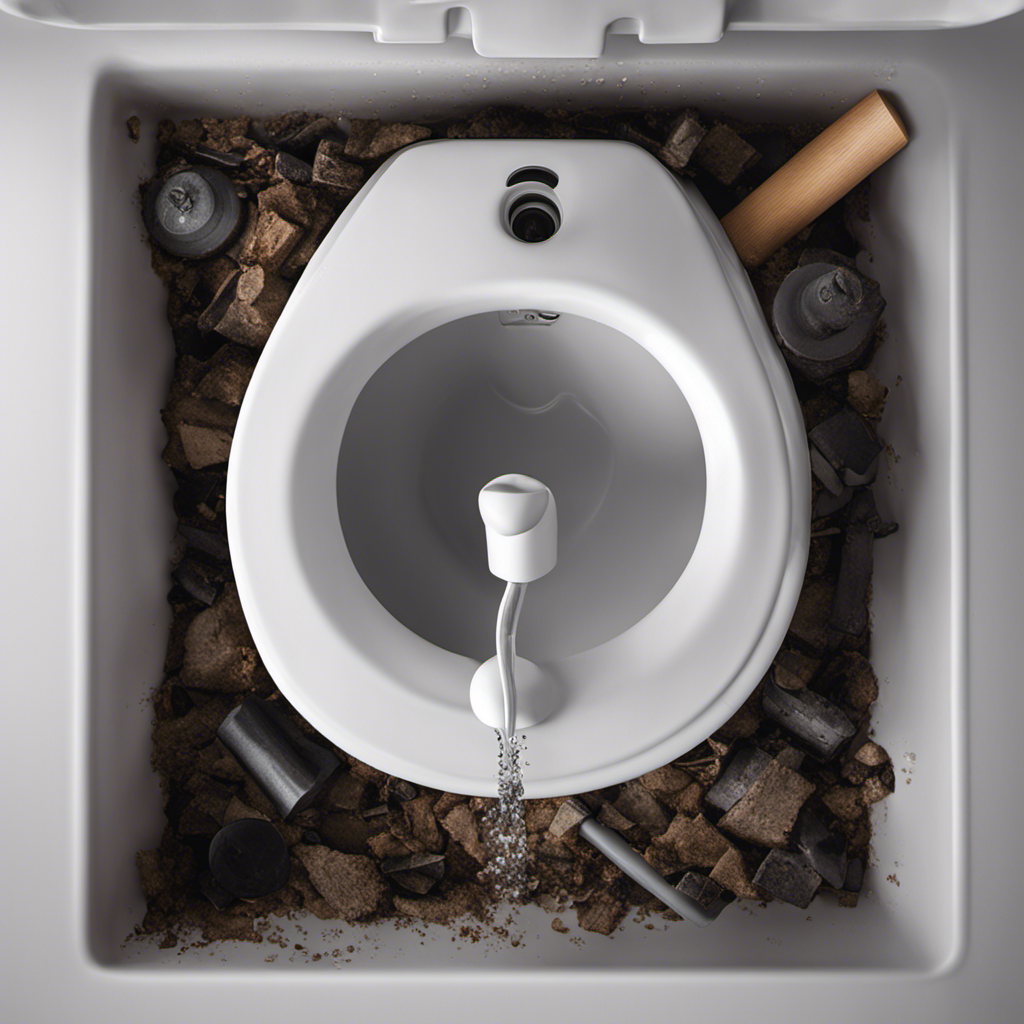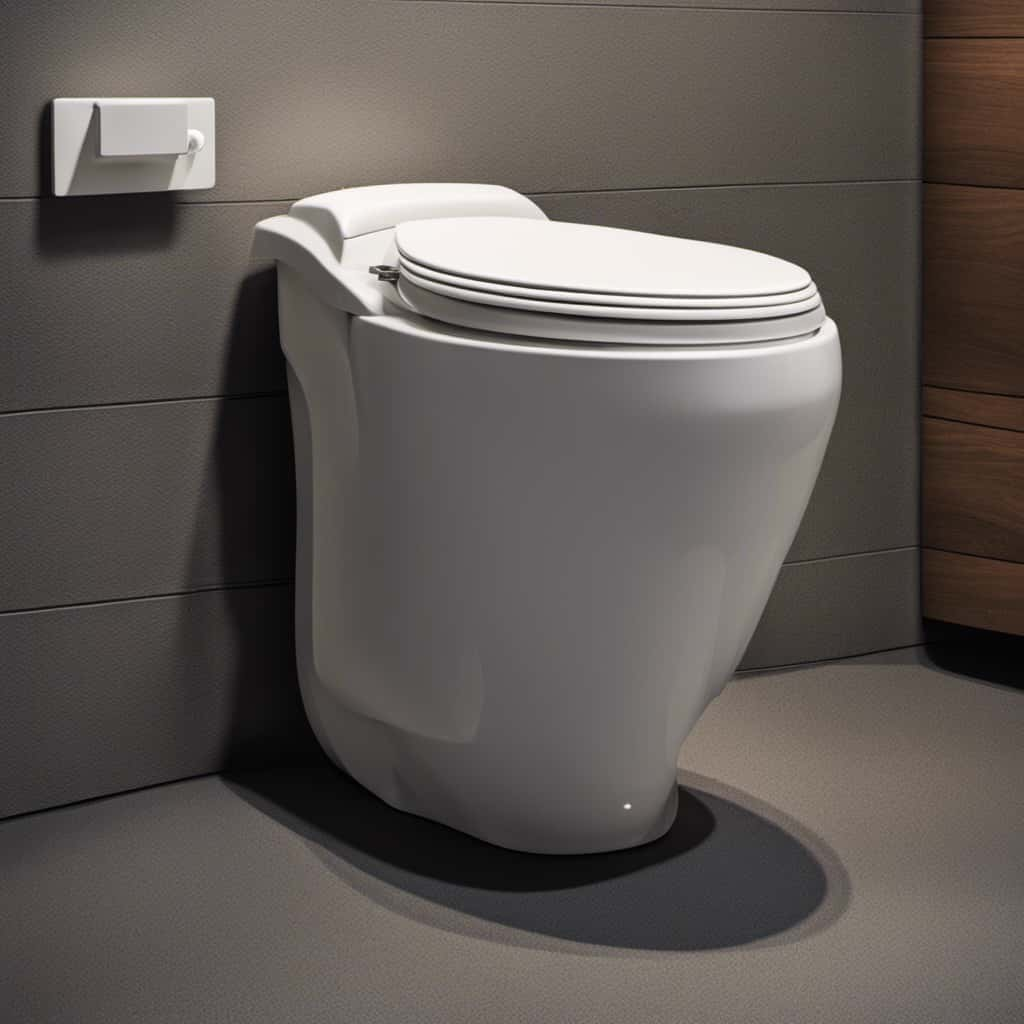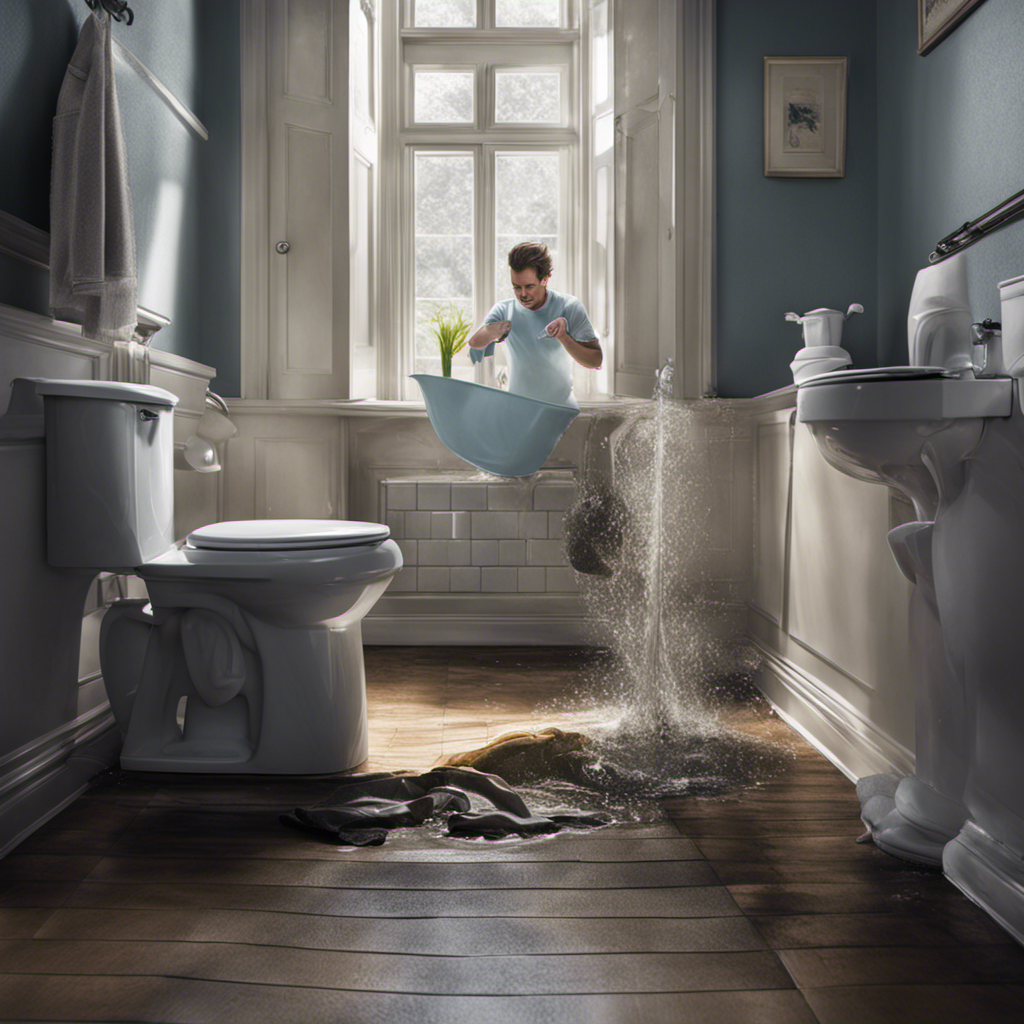Did you know that clogged toilets are a common household problem?
Well, fear no more! In this article, I’ll guide you through the simple steps to unclog your toilet and get your bathroom back in working order.
With just a few tools and a little know-how, you’ll be able to tackle this pesky issue head-on.
So let’s roll up our sleeves and get to work!
Key Takeaways
- The plunger and toilet auger are essential tools for unclogging a toilet.
- Hot water, baking soda and vinegar, and dish soap can be used as common household remedies to help clear a clog.
- Regular maintenance and prevention tips, such as proper waste disposal and cleaning, can help prevent clogs from occurring.
- If the clog persists or there are signs of a more serious plumbing issue, it is important to call a professional for assistance.
Tools You’ll Need
To unclog a toilet, you’ll need a plunger and a toilet auger. These are essential tools that can help you tackle the problem effectively.
The plunger is your first line of defense when it comes to unclogging techniques. It creates suction and pressure to dislodge the blockage. Start by placing the plunger over the drain hole and vigorously push and pull to create a seal. Continue this motion until the water starts to drain.
If the plunger doesn’t work, the next tool to try is a toilet auger. This handy device can reach deeper into the pipes to break up stubborn clogs. Insert the auger into the drain and turn the handle clockwise to break up the blockage.
If these techniques don’t work, there are alternative solutions such as using a drain snake or calling a professional plumber.
Step-By-Step Instructions
Start by checking if there’s a plunger available to help with the clog. If you don’t have one, try borrowing from a neighbor or purchasing one from a nearby store.
Once you have the plunger, follow these step-by-step instructions to unclog your toilet:
- Step 1: Position the plunger over the drain hole and ensure a tight seal.
- Step 2: Push down firmly and then pull up quickly, creating suction.
- Step 3: Repeat the plunging motion several times, maintaining a strong seal.
- Step 4: Test the toilet by flushing it to see if the clog has cleared.
Common Household Remedies
First, let’s explore some common household remedies that can help with a clogged toilet. When faced with a clog, it’s always good to try some natural alternatives before calling a plumber. Here are a few DIY solutions you can try:
-
Hot Water: Start by pouring a bucket of hot water into the toilet bowl. The heat can help break down the clog and clear the blockage.
-
Baking Soda and Vinegar: Mix 1 cup of baking soda with 2 cups of vinegar and pour it into the toilet. Let it sit for a few hours or overnight, then flush with hot water. The chemical reaction can help dissolve the clog.
-
Dish Soap: Squirt a generous amount of dish soap into the toilet bowl. Let it sit for a while, then pour hot water into the bowl and flush. The soap can lubricate the pipes and help the clog move.
Prevention Tips
For preventing future clogs, remember to dispose of items like wipes and sanitary products in the appropriate waste bins.
Here are some additional tips to keep your toilet running smoothly:
- Avoid flushing excessive amounts of toilet paper at once.
- Regularly inspect the toilet tank for any leaks or cracks.
- Clean the toilet bowl regularly to prevent mineral buildup.
- Use a plunger to clear minor clogs before they become major issues.
By following these simple maintenance tips, you can reduce the likelihood of encountering a clogged toilet.
However, there may come a time when professional assistance is needed. If you’ve tried the DIY methods and the clog persists or if you’re unsure about the cause of the issue, it’s best to call a professional to avoid further damage or complications.
When to Call a Professional
If the clog persists or if you’re unsure about the cause of the issue, it’s best to call a professional to avoid further damage or complications.
There are certain signs that indicate a serious plumbing issue that should prompt you to seek professional help. These signs include multiple clogged drains in your home, sewage backup, foul odors coming from your drains, or water leaks that you can’t locate.
These issues could indicate a problem with your main sewer line or a more serious plumbing issue that requires expert attention.
While there are alternatives to calling a professional plumber, such as using a plunger or a drain snake, these methods may not be effective for more severe clogs or underlying plumbing problems.
It’s important to recognize when it’s time to call in the professionals to ensure the issue is properly resolved.
Conclusion
In conclusion, unclogging a toilet can be a messy and frustrating task, but with the right tools and techniques, it can be easily managed.
By following the step-by-step instructions and utilizing common household remedies, such as hot water and a plunger, you can effectively clear the blockage.
Remember to take preventive measures, like avoiding flushing excess toilet paper or foreign objects, to minimize the chances of future clogs.
However, if all else fails, don’t hesitate to call a professional plumber for assistance.
Keep calm and keep those toilets flowing smoothly!










